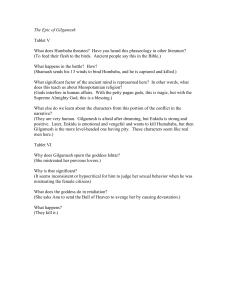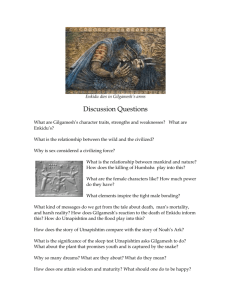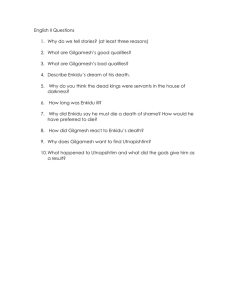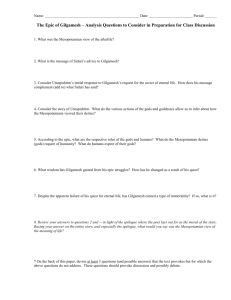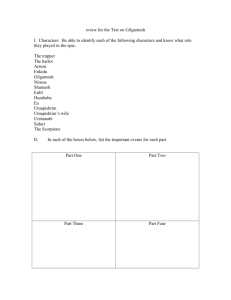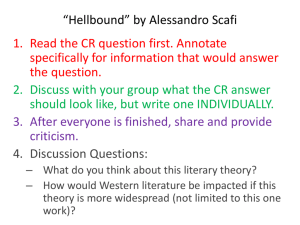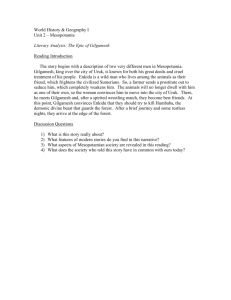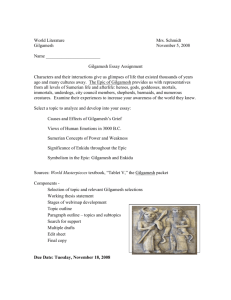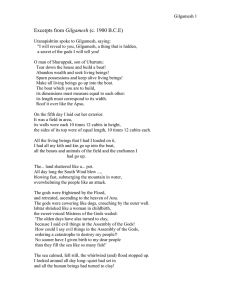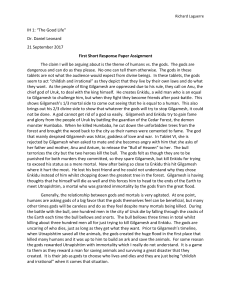Illustrative Examples for Period 1: Technological and Environmental
advertisement
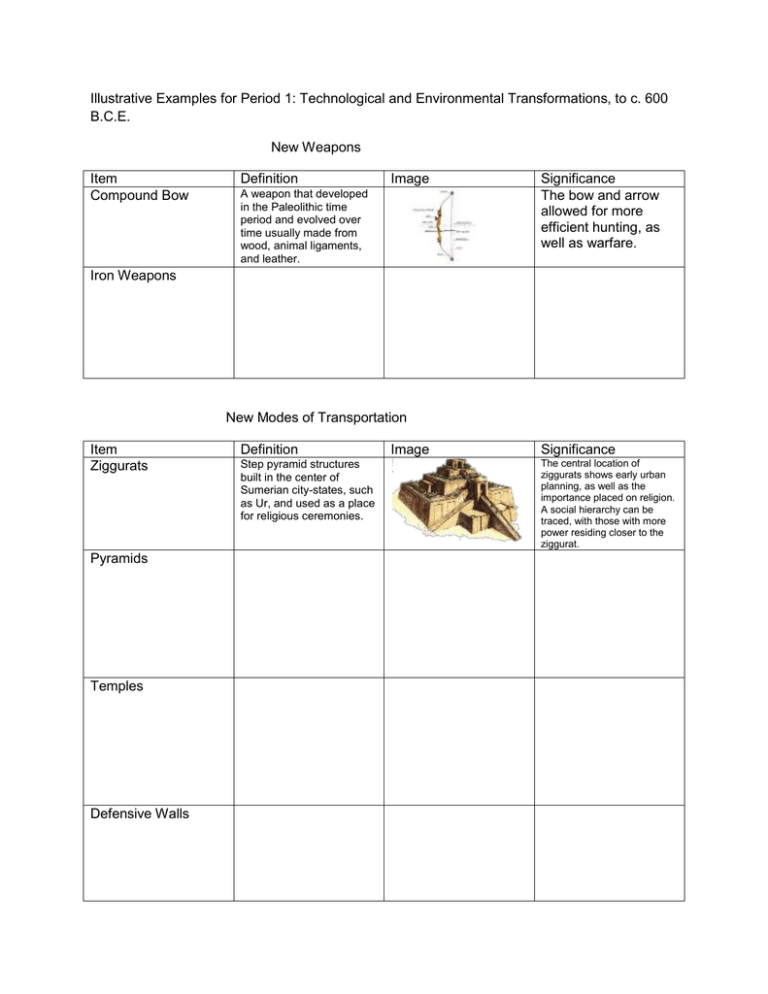
Illustrative Examples for Period 1: Technological and Environmental Transformations, to c. 600 B.C.E. New Weapons Item Compound Bow Definition Image A weapon that developed in the Paleolithic time period and evolved over time usually made from wood, animal ligaments, and leather. Significance The bow and arrow allowed for more efficient hunting, as well as warfare. Iron Weapons New Modes of Transportation Item Ziggurats Pyramids Temples Defensive Walls Definition Step pyramid structures built in the center of Sumerian city-states, such as Ur, and used as a place for religious ceremonies. Image Significance The central location of ziggurats shows early urban planning, as well as the importance placed on religion. A social hierarchy can be traced, with those with more power residing closer to the ziggurat. Streets and Roads Sewage and Water Systems Arts and Artisanship Item Sculpture Definition Image Significance Painting Wall decorations Elaborate Weaving Generally in the form of paintings, carvings, or later writing in both Paleolithic and Neolithic Societies. The image on the right is from an Egyptian tomb and portrays a wealthy couple laboring. It is significant that the wealthy couple chose to portray themselves as laborers, perhaps to please the gods. Wall decorations show high levels of ability and talent and could convey power, instruction, religion, etc. Systems of Record Keeping Term Cuneiform Definition Image Significance Hieroglyphs Pictographs Alphabets Quipu System of record-keeping used in Andean South America. Quipu were made of series of knotted strings which recorded a number (such as items in a storehouse, etc.) The Quipu are significant because, although Andean groups did not have writing, they did have record keeping, and were able to keep track of information and disseminate it over a large empire. Literature Piece of Literature The “Epic of Gilgamesh” Rig Veda Book of the Dead Summary Image Significance Gilgamesh, 2/3 god and 1/3 human was the despotic king of Ur. Gods send Enkidu, a wild man, and they first fight, then become friends. Gilgamesh and Enkidu kill a demon, and the gods decide that Enkidu must die. Gilgamesh is heartbroken, and seeks Utnapishtim who survived the deluge the gods had previously sent. Gilgamesh finds Utnapishtim, hears his story of surviving the flood, and is given a plant that restores youth, but that is stolen by a serpent. 1200-900BCE- collection of over 1,000 hymns which contain the mythology of the Hindu gods, and is considered to be one of the foundations of the Hindu religion. This story is one of the earliest examples of literature, discovered on a series of tablets in Sumerian cuneiform. The epic reflects Sumerian’s view of their gods, which could be vindictive and were frequently involved in human’s affairs. There are interesting parallels between the flood mentioned in the Epic of Gilgamesh and in later documents, such as the Torah. The outcome of the story is that Gilgamesh realizes that he will not live forever, but humankind will. The Rig Veda helped shape Indian society and exemplifies both Aryan and Harappan influences. For instance, the caste system is said to derive from the god Purusha sacrificing himself. (mouth=Brahmins, arms= warriors, thighs= vaisyas, feet= sudra) The common name for the ancient Egyptian funerary text known as “The Book of Coming (or going) Forth by Day.” Book of the Dead was a description of the ancient Egyptian conception of the afterlife and a collection of hymns, spells, and instructions to allow the deceased to pass through. The Book of the Dead illustrates the importance that Egyptians placed on the afterlife, as well as religious customs and beliefs. It also shows the differences in social classes, as the book was expensive, and was mostly afforded to the elites.
